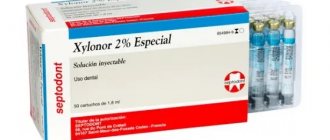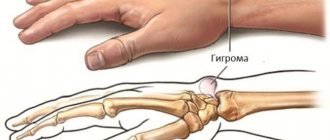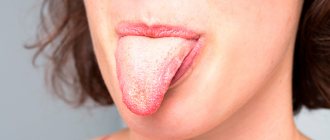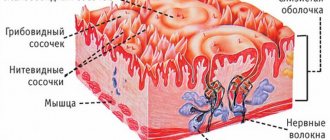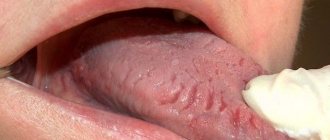As scientists noted back in ancient times, human language has a connection with various organs of the body. When diagnosing, they divided it into conventional parts: basal, middle and tip. And they believed that in case of pathology of a particular organ, the lesion would be observed strictly in one of these areas. AiF.ru looked into what diseases leave their mark on the language together with Professor, Doctor of Medical Sciences, head of the laboratory for the development of an interdisciplinary approach to the prevention of chronic non-infectious diseases of the Federal State Budgetary Institution "State Research Center for Preventive Medicine of the Ministry of Health of Russia", expert of the National Health League Mehman Mamedov .
Related article: On the tip of the tongue. Six questions about taste
Color spectrum
When examined by a doctor, you are often asked to show your tongue. And they do this not out of idle curiosity. After all, even by the color of the tongue it is quite possible to determine whether there is a particular disease. For example, the tongue of a healthy person should be pale pink: this is what is accepted as the norm. If there is a white coating on the tongue, we can talk about fungal infections of the body or disorders of the gastrointestinal tract. A gray tongue is usually the result of chronic pathologies. Bright red - will indicate infectious and inflammatory processes in the human body; if the red color has a shade of scarlet, doctors will suspect problems with the circulatory system. A burgundy tint is a clear sign of an acute infectious process. The tongue is part of the gastrointestinal tract, and is also connected with the respiratory system, because located in the oral cavity. With stomach and duodenal ulcers, problems with the gallbladder, liver and intestines, there may be changes in the color of the tongue. Each disease has its own manifestations - in some places it can be more contrasting, in others it can be lighter.
It also happens that the color of the tongue changes to blue and purple. In this case, they talk about problems with the lungs or severe kidney ailments. Yellowing of the tongue is not only a characteristic feature of a heavy smoker, but also a signal of problems with the gastrointestinal tract. If there is a lack of vitamins in the human body, the tongue may completely lose color.
It is worth considering that a shade that is too dark and saturated is a sign of problems that require immediate medical intervention, or even hospitalization.
The smell of illness. What does the body smell like with this or that pathology? More details
Pathological reflux
There is a constant white coating on the tongue, a metallic taste in the mouth after eating, and the gums bleed. What causes this? Andrey
Elena Adamenko: These symptoms may be associated with pathological reflux - regular reflux of acidic stomach contents into the esophagus, as well as with pathologies of the oral cavity and nasopharynx. Consultation with an otolaryngologist, dentist and gastroenterologist is necessary.
About six months ago, burning pains appeared in the abdomen on the left under the ribs. Colonoscopy showed that the intestines were normal. FGDS results: grade 1 mycosis of the esophagus, cardia insufficiency, erythematous gastropathy. Biopsy without pathologies, Helicobacter was not detected. Ultrasound of the abdominal organs without pathologies, only a polyp in the gallbladder. Medicines for the burning sensation do not help. I did an X-ray of the stomach with barium: no hernia was detected, but the report said “gastroesophageal reflux, duodenogastric reflux.” Where does this burning come from? What other tests can be done to determine the cause? Natalia
Elena Adamenko: The described symptoms may be associated with pathological reflux or eosinophilic esophagitis. They can also be triggered by a stressful situation. It is necessary to perform gastroscopy with a biopsy of the esophagus and pH-metry (measurement of acidity in the esophagus).
How to distinguish a cough with bronchitis and ARVI from a cough with GERD (reflux disease)? Can you lose your voice with GERD? Can polyps in the esophagus develop into cancer? Natalia
Elena Adamenko : It is difficult to independently distinguish a cough with bronchitis and ARVI from a cough with GERD; research is needed. With GERD, the voice may disappear; this is the so-called extraesophageal manifestation of GERD. Theoretically, polyps can develop into cancer, but rarely, it all depends on the type of polyp.
Why is it very rare for FGDS to be done under medicinal sleep in Belarus? Many suffer from a strong gag reflex.
Elena Adamenko : Assessing the benefits and harms of anesthesia (disorientation in space, headache, slight clouding of consciousness, allergic reaction), most doctors are inclined to think that FGDS is better performed without anesthesia. The tolerance of anesthesia depends on various factors: age, addiction, chronic diseases, so it is used with caution.
Last year I had a colonoscopy, they didn’t find anything, although they didn’t take a biopsy. Now I have nausea again, a feeling of heaviness, my stomach ache on the right side. I swallowed the probe, the result: gastritis, duodenitis and reflux. Biochemistry, general analysis is normal, occult blood is negative, calprotectin is 78. The doctor advises to do a colonoscopy again. Does it need to be repeated?
Elena Adamenko: If the doctor insists, then there are objective reasons. Currently, colonoscopy is possible with anesthesia (in this case, the procedure is painless).
Additional factors
However, not only color matters. If the tongue is too dry, the following diagnoses may be made: dehydration, intestinal obstruction, peritonitis. Often, dry tongue is observed with an increase in body temperature. If the situation approaches critical, the taste organ may even crack due to dryness. In this case, an additional threat is created: it is easily infected with bacteria, resulting in suppuration and severe inflammation.
The type of coating on the tongue is also of particular importance. So, if it is thin, it means that the disease is in the initial phase, and if it is frankly fatty and thick, then the problem most likely lies in pathologies of the gastrointestinal system: this usually happens if mucus has accumulated there and food stagnates. A spotted and purple coating indicates the development of blood stagnation. Malfunctions in the digestive system will cause the tongue to become slightly swollen and wet. In this case, it is recommended to be checked for gastritis, cholecystitis, ulcers and even appendicitis.
Article on the topic
How sour it is to live! Why is the sense of taste impaired?
Doctors pay special attention to the place where plaque accumulates. So, if it is more adjacent to the root of the tongue, then problems are noted in the large intestine: most likely, many human waste products have accumulated there and cannot find a way out. Plaque in the middle indicates problems in the small or duodenal intestine or stomach. If the plaque is so thick and the tongue is so swollen that you can see teeth marks along the edge, you need to reconsider your diet: with a high degree of probability it can be said that the intestines cannot cope with the food that a person eats.
The presence of deep wrinkles and cracks located transversely should alert you and send you to a neurologist - as a rule, this problem manifests itself with a predisposition to vascular disorders of the brain.
The tongue can even indicate serious cardiac and vascular problems, which may occur without any symptoms for some time. For example, a tongue that is slightly shifted to the side or slightly bent will indicate a hemorrhagic stroke, cerebrovascular accidents, or problems with the functioning of the cerebellum.
An increase in the volume of the taste organ may be a consequence of problems with the thyroid gland, malfunction of the pituitary gland, or mental disorders.
Taste of illness. How to determine your diagnosis by the taste in your mouth Read more
The tongue as a mirror of gastrointestinal health and other diseases
Many painful processes occurring in our body, one way or another, leave their “imprint” on the tongue. Go to the mirror and look at your tongue. Trembling of the tongue protruding from the mouth may indicate diseases of the nervous system, thyrotoxicosis (increased function of the thyroid gland), mercury poisoning or... alcoholism!) If your tongue is thickened, with teeth marks on the edges, covered with a white or yellowish coating, this indicates problems with the digestive system systems.
Plaque on the tongue appears due to poor chewing of food (lack of teeth, fast food), fever, diseases of the gastrointestinal tract, and exhaustion. Brown plaque often appears with infections of the gastrointestinal tract, for example, with dysentery.
It has long been noted that with gastritis with low acidity (hypoacid), the tongue is coated, and with high acidity (hyperacid gastritis, gastric ulcer), the back of the tongue is usually clean.
If it is also red, covered with cracks and ulcers, these are signs of inflammation of the tongue, glossitis. Normally, when the gastrointestinal tract is healthy, the tongue feels velvety because the back of the tongue is covered with taste buds.
With various diseases, the papillae can decrease in size, become less pronounced (atrophy), or, conversely, increase (hypertrophy). A smooth surface of the tongue, the so-called “polished” or “varnished” tongue, often appears with iron deficiency and B12 deficiency (pernicious) anemia, as well as with a deficiency of vitamins B2 and PP. The factors that lead to such changes in the mucous membrane of the tongue also affect the mucous membrane of the stomach and intestines: the same changes occur there - atrophy of the epithelium. Tongue with peptic ulcer of the stomach and duodenum, the papillae are also well expressed. The tongue can also be “folded” and “geographical”, when its surface is covered with folds or has areas of depression and elevation. These are also signs of a digestive system disease. Ulcers on the tongue can appear due to tuberculosis, syphilis, and oncological (tumor) diseases. The thought that it is worth contacting an oncologist for advice should arise if there are areas of thickened epithelium on the tongue. People infected with HIV may develop lingual hairy leukoplakia (“hairy tongue”)—the root of the tongue (the place where the tongue attaches to the mouth) becomes covered in long, thin growths that look like hair.
There are contraindications. Read the instructions or consult a specialist.
Shaky and grainy
Sometimes a person may notice that his tongue... trembles. This condition indicates nervousness and problems with the central nervous system. In such a situation, doctors recommend changing the psychological environment, as well as working on your lifestyle. It is also worth checking with a doctor if your sense of taste begins to decrease. After all, it does not develop out of the blue: there must be a reason why a person no longer feels the tastes to which he is accustomed. Moreover, it is important to understand that there are certain zones and areas on the tongue that are responsible for the reaction to different tastes: spicy, salty, sweet, etc. If a malfunction is noted in any of the parts, this may indicate that the nervous system is suffering. or endocrine system. Loss of taste in the taste buds of the tongue manifests itself as a result of metabolic disorders in the human body, as well as malfunctions of the central system of various etiologies, the development of anemia and the presence of cancer.
Also, people often begin to notice that the tongue has become rougher: this is due to an increase in the size of the papillae on the surface of the organ. When swollen papillae are localized at the tip, it is worth being examined by a cardiologist. If the tongue becomes “spiky” around the edges, you need to check the liver. An affected middle part of the tongue indicates problems in the stomach and intestines. At the same time, you should not rejoice when the tongue becomes smooth and “mirror-like”. After all, this is also a pathology. This happens with anemia, exhaustion or severe pathologies of the stomach.
Physiological white coating on the tongue
White coating on the tongue is most often found in the morning. At night, less saliva is produced, which contributes to the activation of bacterial activity. As a result, by morning, almost all people develop a white coating on their tongue. Sometimes it is accompanied by bad breath.
As a rule, such plaque is easily removed during morning oral hygiene. When we brush our teeth, it is advisable to also brush our tongue, especially its root. Modern toothbrushes have a surface specially modified for this purpose (the other side in relation to the bristles).
However, the white coating disappears on its own as the day begins. It is erased when eating, and the greater amount of saliva released prevents it from forming again.
